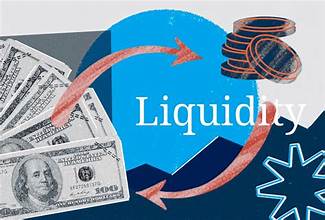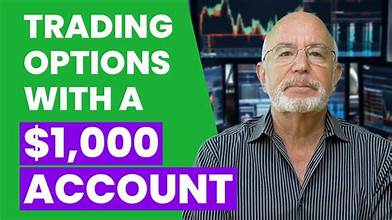Can DeFi help you earn interest on your cryptocurrency? Is it risky? Will it change the future of finance? These are some of the questions we’ll answer in today’s episode of Crypto Whiteboard Tuesday, brought to you by Nate Martin from 99Bitcoins.com.
What is DeFi (Decentralized Finance)?
DeFi, short for Decentralized Finance, refers to financial services that operate without a central authority or someone in charge. Using decentralized cryptocurrencies like Ethereum and its smart contract technology, DeFi aims to recreate traditional financial services in a trustless, transparent, and decentralized manner.
Today’s financial system, known as Centralized Finance (CeFi), includes services like loans, savings plans, insurance, and stock markets. However, CeFi systems are controlled by central entities like banks or insurance companies, which can be prone to risks like mismanagement, fraud, or corruption.
DeFi eliminates the need for these middlemen by utilizing blockchain technology, allowing users to access financial services directly.
The Foundation of DeFi: Ethereum
To build a decentralized financial system, we need an infrastructure to program and run decentralized services. This is where Ethereum comes in.
Ethereum allows developers to create decentralized applications (Dapps) and smart contracts—self-executing programs that automatically follow predefined rules. Once deployed on the Ethereum network, these smart contracts become immutable, meaning no one can alter or control them.
Components of DeFi
- Money in DeFi
Every financial system needs money. While Bitcoin is decentralized, it’s not programmable or compatible with Ethereum’s platform. Similarly, Ethereum’s native currency, Ether (ETH), is programmable but highly volatile, making it less suitable for reliable financial services.
This is where stablecoins come into play. Stablecoins are cryptocurrencies pegged to real-world assets like the US dollar, providing price stability.
Example: DAI Stablecoin
- DAI is a decentralized stablecoin pegged to the US dollar (1 DAI = $1).
- Unlike other stablecoins backed by fiat reserves, DAI is backed by crypto collaterals on the Ethereum blockchain, ensuring transparency and decentralization.
- DAI is over-collateralized, meaning you must lock up more value in Ether to borrow DAI (e.g., $1 worth of Ether allows you to borrow $0.66 in DAI).
- Decentralized Exchanges (DEXs)
- DEXs allow users to buy, sell, or trade cryptocurrencies without intermediaries or centralized operators.
- Features include:
- No sign-ups or identity verification.
- No withdrawal fees or deposits into exchange accounts.
- Elimination of risks like exchange hacking.
Examples: Uniswap, PancakeSwap, and other DEX platforms that use Ethereum smart contracts to execute trades.
- Decentralized Money Markets
DeFi platforms like Compound connect lenders and borrowers directly.
- Lenders can earn interest by lending their crypto assets.
- Borrowers can deposit crypto as collateral and borrow funds against it.
- Yield Farming: This term refers to maximizing returns by lending or staking crypto assets to earn interest or rewards.
- Decentralized Insurance
DeFi also enables insurance services without traditional agents or companies. A decentralized platform connects people willing to pay for insurance with those willing to insure them for a premium.
- Money Legos
DeFi services are modular and can be combined to create innovative solutions, earning them the nickname “money legos.”
For example:
- Use a DEX aggregator to swap Ether for DAI at the best rate.
- Lend the DAI to earn interest.
- Add decentralized insurance to cover risks.
Benefits of DeFi
DeFi presents several advantages over traditional finance:
- Transparency: Transactions and rules are visible on the blockchain.
- Interoperability: DeFi services work together seamlessly.
- Decentralization: No central authority controls the system.
- Accessibility: Open to anyone with an internet connection.
- Lower Costs: Fewer fees compared to traditional finance.
Risks of DeFi
Despite its potential, DeFi is still in its infancy, and there are risks to consider:
- Smart Contract Vulnerabilities: Poorly written code can create loopholes that hackers exploit to steal funds.
- Partial Decentralization: Some services may retain centralized aspects, which can act as a single point of failure.
- High Volatility: Cryptocurrencies used in DeFi are still subject to significant price swings.
Tip: Only invest money you can afford to lose and research thoroughly before using DeFi services.
The Future of DeFi
DeFi has entered its early adopter stage, and the coming years will determine whether it can achieve mainstream adoption. If successful, decentralized finance could revolutionize the financial world, benefiting populations currently underserved by traditional systems and reducing inefficiencies.
Conclusion
DeFi, or Decentralized Finance, is a rapidly growing sector aiming to replace the traditional financial system with transparent, accessible, and decentralized services. From stablecoins like DAI to decentralized exchanges, lending platforms, and insurance, DeFi offers exciting opportunities—but also comes with risks.
Still have questions? Leave them in the comments below! If you’re ready to explore more about DeFi, check out the resources in the description. Don’t forget to like this video, subscribe to the channel, and click the notification bell to stay updated.
Thanks for joining me here at Crypto Whiteboard Tuesday. For 99Bitcoins.com, I’m Nate Martin—see you in a bit! 🚀
The Future of Decentralized Finance (DeFi) in Trading
Decentralized Finance (DeFi) is reshaping the global financial landscape by eliminating intermediaries and democratizing access to financial services. Built on blockchain technology, DeFi enables users to trade, borrow, lend, and invest in a decentralized, permissionless, and transparent ecosystem. As DeFi continues to evolve, its role in trading is expanding, presenting both opportunities and challenges for traders worldwide. This article explores the current state and potential future of DeFi in trading.
- Understanding DeFi and Its Core Principles
DeFi refers to financial services built on blockchain technology, primarily utilizing smart contracts on platforms like Ethereum, Binance Smart Chain, and Solana.
Key Features of DeFi:
- Decentralization: Removes intermediaries like banks or brokers, empowering users with direct control.
- Transparency: Every transaction is recorded on a public blockchain, enhancing trust.
- Accessibility: Enables anyone with an internet connection to participate, regardless of geographic location.
In trading, DeFi facilitates decentralized exchanges (DEXs), token swaps, and derivatives trading without the need for centralized platforms.
- Current Trends in DeFi Trading
DeFi has revolutionized trading by introducing innovative tools and platforms that cater to various trader needs.
- Decentralized Exchanges (DEXs)
- Advantages:
- No KYC requirements, preserving privacy.
- Lower fees compared to centralized exchanges (CEXs).
- Challenges:
- Impermanent loss for liquidity providers.
- Limited scalability and slower transaction speeds compared to CEXs.
- Yield Farming and Liquidity Provision
Traders can earn passive income by providing liquidity to DEXs or participating in yield farming, where they lend or stake tokens for rewards.
-
- Use wallets like MetaMask or Trust Wallet for secure access to DeFi platforms.
- Leverage tools like DeFi Pulse or Zapper to monitor portfolio performance and opportunities.
- Tokenized Assets and Derivatives
DeFi enables trading of tokenized versions of traditional assets (stocks, commodities) and crypto derivatives like options and futures.
- Automated Market Makers (AMMs)
AMMs like Balancer and Curve use smart contracts to determine asset prices and execute trades, replacing traditional order books.
- Benefits of DeFi in Trading
DeFi offers unique advantages that are transforming the trading landscape.
- Greater Financial Inclusion
DeFi eliminates the barriers of traditional finance, enabling anyone to trade without requiring a bank account or credit history.
- Reduced Counterparty Risk
Trading on DeFi platforms minimizes reliance on third parties, reducing the risk of fraud or mismanagement by centralized entities.
- Enhanced Security and Transparency
Blockchain technology ensures that all transactions are secure and publicly verifiable, fostering trust among participants.
- Access to Global Liquidity
DeFi connects traders across the globe, offering deep liquidity and competitive pricing.
- Challenges Facing DeFi in Trading
- Scalability and Speed
Many DeFi platforms struggle with high network congestion and slow transaction speeds, particularly during periods of high demand.
- Security Risks
- Smart Contract Vulnerabilities: Bugs in code can be exploited by hackers, leading to significant losses.
- Rug Pulls: Fraudulent projects can drain investor funds, eroding trust in the ecosystem.
- Regulatory Uncertainty
Governments worldwide are still formulating policies for DeFi, creating uncertainty for traders and developers.



